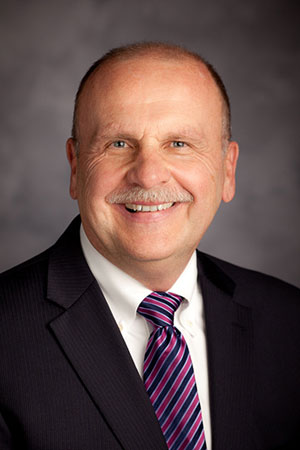Use Of Yoga, Meditation, And Chiropractors Among U.S. Adults: 2012-2017
A report from the National Center for Health Statistics (NCHS) in November 2018 examines changes over time in the percentage of adults who used yoga, meditation, and chiropractors in the past 12 months, as well as variation by sex, age, race, and Hispanic origin. Among adults aged 18 and over, increases were seen from 2012 to 2017 in the use of yoga, meditation, and chiropractors. Yoga was the most commonly used complementary health approach among U.S. adults in 2012 (9.5%) and 2017 (14.3%). In 2017, women were more likely to use yoga, meditation, and chiropractors in the past 12 months compared with men. Non-Hispanic white adults were more likely to use yoga, meditation, and chiropractors compared with Hispanic and non-Hispanic black adults. In 2012, seeing a chiropractor was as popular as yoga, followed by meditation, but in 2017, meditation became the 2nd most-used approach ahead of chiropractic.
Increasing Medication Adherence Could Improve Care And Save Health Care Costs
Non-adherence to medication represents a major problem that limits the effectiveness of treatment and adds to the burden of illness and cost of health care. About half of all patients do not take their medication as prescribed, according to a September 2018 report from the National Council for Behavioral Health’s Medical Director Institute. Estimates indicate that medication non-adherence costs the health care delivery system $100 billion to $300 billion annually due to more frequent use of high-cost services, additional prescriptions to offset non-adherence, and interventions to address relapses. The report discusses medication non-adherence in chronic conditions, mental health, and substance use disorders, and offers some possible solutions. If many of these solutions were to be adopted by 2025, a projection is made that the health system would save $2 billion a year from reduced hospital costs alone. Apart from improving communication between patients and providers, some more high-tech solutions include apps and robots.
HEALTH TECHNOLOGY CORNER
Robotic Arm May Help To Rehabilitate Chronic Stroke Victims’ Communication Deficits
Apropos of the article about silos in Health Silo Disruption and Eradication of this issue of TRENDS, treatment in one domain (motor function) may benefit performance in another untreated domain (communication) in individuals with acquired aphasia, the loss of ability to understand or express speech. Research published in Frontiers in Neurology on October 22, 2018 shows that robotic arm rehabilitation in chronic stroke patients with aphasia may promote speech and language function recovery. The rehabilitation in this study targeted the right arm since study participants each had suffered a left hemisphere stroke leading to a deficit in motor function on their right side. The research team observed small, but consistent improvement on measures assessing speech articulation and overall language processing in aphasia. It is believed some treatment approaches may encourage plasticity and reorganization that can span multiple domains. Although this initial finding should be interpreted cautiously, it remains exciting to consider the possibility that stroke rehabilitation in one domain would improve performance in another domain.
Obesity Provides Unexpected Enhancement Of Anticancer Medications
Obesity is associated with increased mortality and reduced longevity, but counter-intuitive findings occasionally suggest evidence of an obesity paradox. An article published in the journal Nature Medicine on November 16, 2018 indicates that overweight patients sometimes respond better than other patients to powerful drugs that harness the immune system to fight tumors. Called checkpoint inhibitors, the drugs block the activation of PD-1, a protein on the surface of immune sentinels called T cells. The body naturally triggers PD-1 to dampen immune responses, but tumors also can stimulate PD-1 to protect themselves. Lifting this molecular “brake” allows the T cells to attack the cancer cells. PD-1 inhibitors have caused untreatable tumors to vanish for years in patients with melanoma, lung cancer, and some other cancer types. Although there is heightened immune dysfunction and tumor progression, there also is greater anti-tumor efficacy and survival after checkpoint blockade that targets some pathways activated in obesity.
More Articles from TRENDS September 2018
FULFILLING A QUEST FOR PATIENT-CENTERED CARE
Patient-centered care is an important aspect of service delivery, but more efforts are needed to achieve its full potential. Read More
PRESIDENT’S CORNER—ASAHP MEMBER FOCUS
Charles Gulas, Dean of the Walker College of Health Professions at Maryville University of Saint Louis, is featured in this issue of TRENDS. Read More
FISCAL YEAR 2019 FUNDING PICTURE BRIGHTENS
For the first time in 15 years, Congress manages to complete a funding package for health and education prior to the start of the next fiscal year on October 1. Read More
HEALTH REFORM DEVELOPMENTS
Some states seek workforce requirements for certain Medicaid recipients, a challenge is mounted to stop an expansion of short-term health insurance plans, and savings are produced by accountable care organizations. Read More
DEVELOPMENTS IN HIGHER EDUCATION
Opponents respond to a Trump Administration proposal to rescind gainful employment regulations, representatives of various interest groups testify at a U.S. Department of Education hearing on accreditation, and Congress increases appropriations for education programs. Read More
AVAILABLE RESOURCES ACCESSIBLE ELECTRONICALLY
Creating A Policy Environment To Address Social Determinants Of Health
Population Health: Translation Of Research To Policy
Achieving Rural Health Equity And Well-Being: Proceedings Of A Workshop Read More




